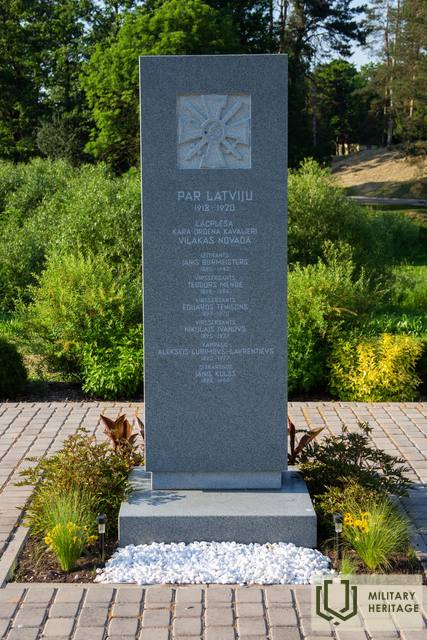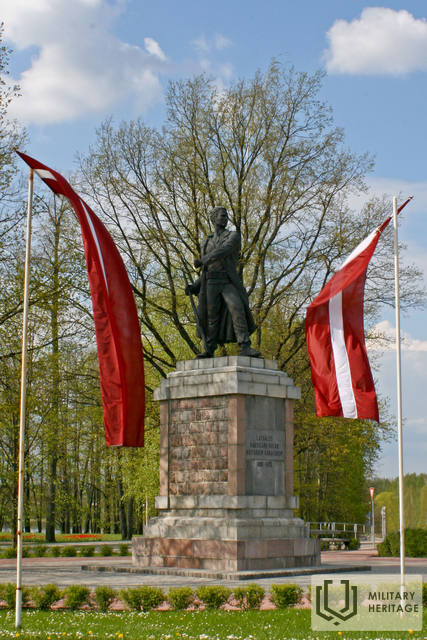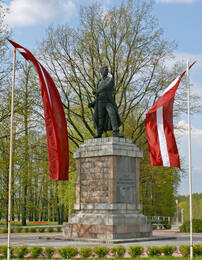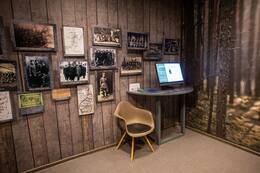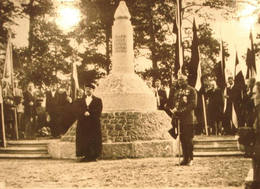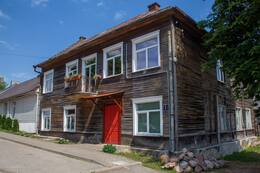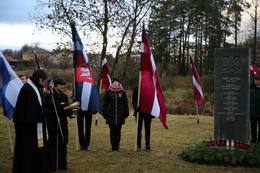Освобождение Северной Латгалии от большевиков
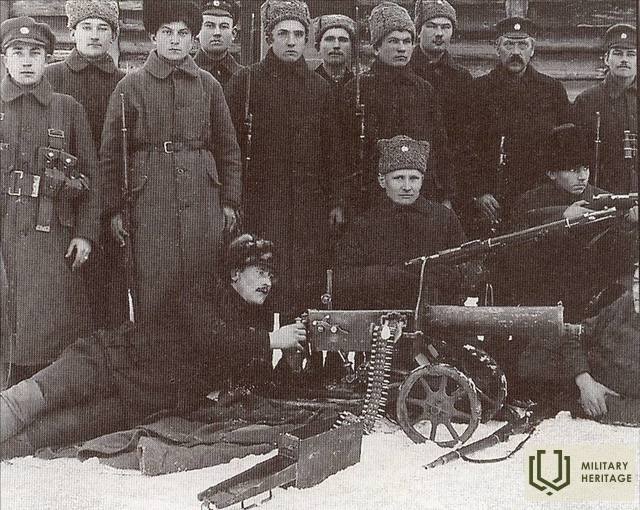
1 декабря 1918 года части Красной Армии на базе частей Красных стрелков вторглись на территорию Латвии. Чтобы защитить свои дома, семьи, родные районы и спастись от террора, люди вокруг Балви взяли оружие и пошли в леса, и начали формироваться первые «зеленые» группы. Весной 1919 года, когда была объявлена мобилизация, многим мужчинам в районе Балви не разрешили воевать в советской латвийской армии, и они присоединились к «зеленым» группам. Были сформированы группы Балви, Силакрог, Ругаджи, Тетеру-Дупе и Лиепна. В окрестностях Балви в марте 1919 г. активизировалась деятельность «зеленых» групп.
В мае 1919 года, когда продолжались атаки вооруженных сил Временного правительства Латвии на восток, активность партизан в окрестностях Балви усилилась. Весной 1919 года сформировалось несколько партизанских отрядов, в каждой группе был свой командир, связи между отдельными «зелеными» отрядами практически не было.
В мае-июне 1919 г. в районе Лиепна-Балви-Ругайи не было враждующих армий, не действовали административные учреждения. Защиту региона взяли на себя местные партизаны, создав систему опорных пунктов от озера Лубана до Лиепны. Перед партизанами стояла непростая задача - удержать линию фронта около 50 км, обеспечив как можно больше постов на основных дорогах. Для защиты использовались естественные преграды - заболоченные полосы, лесные массивы.
В начале июня 1919 года «зеленые» отряды Ругаджи, Сударбе, Орлова, Силакрога, Балви, Куправа объединились в партизанский отряд Балви, командующим стал Янис Виндзис. В призовом партизанском отряде было около 100 человек, посты охраны важнейших дорог находились в районе Ругаджи, Сударбе, Орлова, Силакрога, Куправа, связь обеспечивалась отделом из 30 человек на лошадях.
В июне партизанский отряд Балви участвовал в столкновениях с вражескими разведывательными группами, не позволяя Красной Армии вернуться. Столкновения произошли возле Силакрога, Августова, Орлова, Сударбе, Куправы, Покроты, Тикикай. Несмотря на небольшое количество партизан, почти все сражения побеждали, как благодаря признанию болот и лесов, так и поддержке населения.
В начале июля 1919 года главнокомандующий Восточным фронтом отдал приказ о присвоении Балвской партизанской дивизии Латгальскому партизанскому полку, и командующим был назначен старший лейтенант Янис Винендзис. Полк стал регулярной частью армии, состоящей в основном из местных жителей, в основном добровольцев, в том числе пожилых мужчин и подростков, не достигших призывного возраста. В начале июля в полку было чуть больше 700 солдат, но количество боевых частей постепенно увеличивалось, в октябре уже было 3 батальона с 8 украшениями и около 2000 солдат. Наряду с формированием полка велись активные боевые действия. В 1919 году бои продолжались с переменным успехом, партизаны сохранили свою оккупированную территорию. Крупнейшие бои произошли у Стомпакая, Кокорева, Аугустова, Сусаджи и Лиепны. В августе и сентябре бои в секторе полка продолжались как в форме разведывательных столкновений, так и в форме штурмовых операций.
В октябре командование полком принял капитан Янис Скуиньш. Полк расширил свою территорию, подавляя части Красной Армии, и был вынужден отступить, оставив недавно освобожденные населенные пункты. Состав полка увеличился после того, как многие местные жители беспрепятственно присоединились к Латгальскому партизанскому полку после освобождения территории, а также прибыли добровольцы с территорий, подконтрольных Советскому Союзу, тайно пересекая фронт.
9 января 1920 года в 6 часов утра одновременно началась атака всего Северо-Латгальского фронта.
Главной задачей полка было занять железнодорожный узел Питалова, не допустив продвижения противника к югу от Латгалии, где атаковали части литовской и польской армий.
Самый крупный боевой полк победил при Карсаве, Балтинаве, Аугшпилсе, Питалове. Ожесточенные бои происходили под Шкилбенами, 2-й батальон Латгальского партизанского полка атаковал Шкильбенское нагорье, бои продолжались несколько дней, противником выступал 15-й армейский полк особого назначения.
Освобождение Северной Латгалии для Латгальского партизанского полка стало самым серьезным испытанием за всю его боевую историю. Бойцы полка, в основном местные жители, отлично использовали знания местности и умело применили тактику партизанской борьбы.
53 бойца полка за боевой героизм удостоены высшей государственной награды - ордена Лачплесиса. Их судьбы были разными, многие были арестованы при советской власти, депортированы в Сибирь или эмигрировали во время Второй мировой войны.
В честь памяти погибших воинов после Освободительной войны в Балви, Вилаке, Балтинаве, Шкилбены, Ругаи, Тилза, Карсава, Линавская волость, Ритупе, * Каценская волость * (* ныне территория Российской Федерации) установлены памятники. . На многих кладбищах - Берзкалнская волость. Приедайнское кладбище, Ругайская волость. Чепурниеки, Гаросильское кладбище, Стамерское кладбище, Православное и лютеранское кладбище города Балви, Лиепенская волость. кладбища и другие погребенные люди, которые своим героизмом и самоотверженностью в Освободительной войне способствовали освобождению Латвии.
Коллекционные материалы музея Балвского уезда
Связанная хронология
Связанные темы
Связанные объекты
Памятник павшим воинам Латгальского партизанского полка 1919 - 1920 гг.
Памятник Латгальскому партизанскому полку.
В истории Войны за независимость Латвии (1919-1920) Латгальский партизанский полк, колыбель которого когда-то находилась на территории бывшего Балвского района, был сформирован из «зеленых» полков уже в конце 1918 года.
Памятник был впервые открыт 14 августа 1938 года при участии генерала Яниса Балодиса. Автор памятника – художник Карлис Янсонс.
В 1940 году коммунисты разрушили памятник, после установления советской власти исполком Абренского района весной 1941 года принял решение о сносе памятника, но изображение партизана было захоронено во дворе Балвского ополчения. В немецкое время памятник восстановили, но когда вернулась Красная Армия, памятник второй раз снесли, вывезли и уничтожили. Когда Латвия восстановила свою национальную независимость, жители Балвен собирали пожертвования на восстановление памятника латгальским партизанам. 11 ноября 1993 года в Балвосе был открыт отреставрированный памятник Андрею Янсонсу, сыну художника Карлиса Янсонса.
Выставка «Ziemeļlatgale в борьбе за свободу» в музее Балвумаа
Выставка позволяет взглянуть на историю независимости Латвии с точки зрения Северной Латгалии. Каков вклад людей с нашей стороны, как наши деды участвовали в борьбе за общее дело Латвии, каковы их судьбы, как сохраняется память о них? Ответы на эти и другие вопросы можно найти на латышском, русском и английском языках.
Операция по освобождению Северной Латгалии, также называемая операцией по захвату Вилякас-Яунлатгале, была частью операции по освобождению Латгалии, проведенной латвийскими вооруженными силами во время борьбы за свободу Латвии. Его целью было занять северную часть Латгалии и перерезать железнодорожную линию Псков — Даугавпилс, чтобы не допустить прибытия дополнительных частей советских русских войск с Эстонского фронта и из глубины России. Самые важные бои произошли между 9 и 20 января 1920 года, когда была взята под контроль железнодорожная линия Питалова (Абрене) — Карсава.
Памятник воинам, погибшим в боях за освобождение Латвии в Яшкове.
Участок дороги Виляка – Виентули (P35) находится слева от дороги, возле часовни Яшковой могилы.
Памятник латвийским и эстонским солдатам, погибшим в Освободительной войне.
Памятник, созданный скульптором Карлисом Земдегой в 1920 году в память о воинах, павших в Освободительной борьбе в Яшкове, впервые был открыт 22 сентября 1935 года на могилах братьев Виляка, основанных в 1929 году.
Борьба за свободу против Красной Армии в Вилякском районе началась с нападения латышской армии и Латгальского партизанского полка 9 января 1920 года. В нем участвовали и эстонские солдаты. Виляк был освобожден уже 9 января, но бои к востоку от него продолжались еще несколько дней. Как до, так и после освобождения Вилакаса павших воинов хоронили в разных местах, известных местным жителям. Когда состояние Латвии стабилизировалось, Вилякас начал думать о совместных могилах братьев. Уже с 18 ноября 1923 г., после торжественной службы в костеле, которую провел настоятель П. Апшиникс, большая процессия отправилась к новообразованному месту захоронения братьев на холме, в т. н. Яшкове - в ближайшем окрестности Виляки. Вскоре был заложен фундамент памятника, начался сбор пожертвований на памятник. Выявление могил павших бойцов заняло время, только 3 ноября 1929 года состоялось перезахоронение в будущих могилах братьев. В них были захоронены 31 латышский и 14 эстонских воинов, павших в окрестностях Вилякаса.В 1935 году памятник был готов и 22 сентября его торжественно освятили.
В довоенные годы независимости Латвии все важные национальные события в Вилякской волости были связаны с могилами братьев и этим памятником.
Памятник был разрушен в послевоенные годы советской власти, но его гранитные части хоть и пострадали, но сохранились. Памятник был восстановлен 11 ноября 1990 года - в День Лачплеша.
Экспозиция «Комнаты Абрене» (Abrene)
Экспозиция «Комнаты Абрене» расположена недалеко от центра города Виляка. Она охватывает период с 1920 по 1960 год, когда Виляка входила в состав Яунлатгале Абренского уезда и стала центром Вилякского уезда и Абренского районов. Экспозиция расположена в здании с самой интересной и разнообразной историей в Виляке. Изначально он располагался на старой рыночной площади Мариенхаузена, позже здесь были квартиры и офисы, различные магазины, во время Второй мировой войны - штаб самообороны Латвии, гестапо, а также ЧК. В экспозиции представлены предметы, привезенные из национального партизанского лагеря на болоте Стомпаку и связанные с национальным партизанским движением в Латгалии, а также документы и фотографии, связанные с Войной за независимость. Если вы забронируете посещение в сопровождении гида заранее, то хозяин Дзинтарс Двинскис ознакомит вас со свидетельствами, входящими в состав экспозиции.
Мемориальная стела кавалерам Военного ордена Лачплеша
Он расположен рядом с римско-католической церковью Сердца Иисуса в Виляке.
Памятная стела рыцарям Лачплешского военного ордена в Вилякском районе была открыта 11 ноября 2017 года. Судьбы 28 Лачплешских кавалеров Военного ордена связаны с именем Вилякского края.
Гранитная стела создана в рамках проекта «Помни Лачплешуса», посвященного столетию Латвийского государства. По всей Латвии будут установлены памятные стелы единого образца в честь воинов, погибших в борьбе за освобождение Латвии. Инициатором проекта является Джаунсардзе и информационный центр.
Пять рыцарей Лачплешского военного ордена, имена которых выгравированы на памятной стеле, жили на территории современного Вилякского района после окончания Освободительной борьбы:
– Янис Кульшс был молодым крестьянином в Апсисе Шкилбенской волости,
– Алексей Любимов (Лаврентьев) жил на хуторе Фортепьянова в Шкильбенской волости, позже в Вилаке,
– Теодорс Менде управлял закрепленным за ним хозяйством и был лесником в деревне Катлеши Жигурской волости,
– Эдуард Теннисон жил на станции Вецуму, позже жил в деревне Чабатрова и работал на п/с «Виляка»,
– Янис Бурмейстерс после 1928 г. некоторое время жил в Шкилбенской волости.
На братском кладбище в Вилякском уезде покоятся 45 солдат, отдавших жизнь в 1920 году, защищая Латвию от фанатиков. 9 января в Северной Латгалии начались атаки, и, несмотря на сложные погодные условия того времени, в этот же день была освобождена и Виляка.
В боях за освобождение Латгалии эстонские солдаты также сражались плечом к плечу с солдатами латышской армии и партизанами против Красной Армии в Вилякском уезде. Многие из них отдали жизнь за свободную Латвию.
Музей Вилака. Выставки о военном наследии в районе Виляки
Музей Виляки работает в двух зданиях – католическом приходском доме, построенном в 1913 году, который является важным объектом культурного наследия города, и другом здании музея – бывшем монастыре монахов-капуцинов, подвалы которого тесно связаны с национальным партизанским движением в Стомпаки и советской ЧК. По воспоминаниям местных жителей, в этих подвалах содержались и подвергались пыткам люди. В старом здании музея размещено несколько экспозиций, одна из которых посвящена освободительным боям 1920 года в Северной Латгалии, а вторая – событиям Второй мировой войны – еврейскому Холокосту в Виляке и информации о расстрелянных семьях. Более подробная информация о каждой семье доступна по ее адресу.
Экспозицию дополняет информация о национальном партизанском движении в Стомпаки – различные свидетельства, фотографии и предметы. Посетители могут узнать о военных объектах наследия в Виляке и ее окрестностях, таких как Памятник борцам за свободу в Яшкове, который был снесен в советское время и восстановлен в 1990 году, и стела, посвященная кавалерам ордена Лачплесиса. В экспозицию музея включен звук самолетов Второй мировой войны, поскольку немецкий аэродром Люфтваффе находился недалеко от Виляки. Музей дает возможность увидеть некоторые воспоминания о событиях Второй мировой войны в Виляке, а также получить информацию о немецком лагере для военнопленных в Рачи






